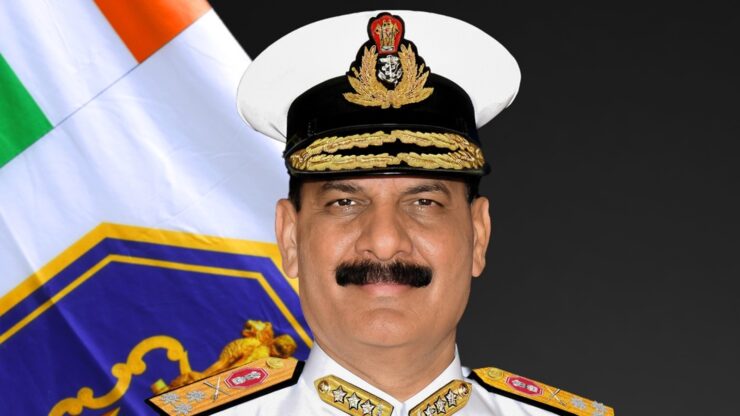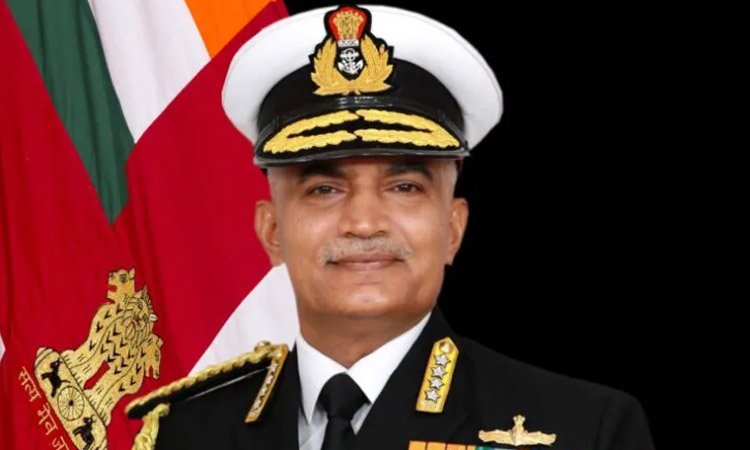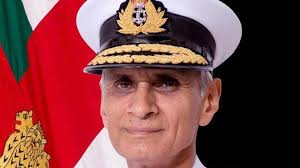
On April 30, 2024, CNS Admiral R Hari Kumar, who took over from CNS Admiral Karambir Singh in 2021, handed over the big white chair in South Block to Admiral Dinesh Kumar Tripathi, a very experienced officer, at a time when the Navy has grown in size and stature. In the last six years, India has moved closer to the USA and years of neglect of India’s maritime strategy seem over. Anuttama Banerji of NMF puts it succinctly, “This shift has enabled the advancement of bilateral defence ties between India and the US with the foundational agreements — the General Security of Military Agreement (GSOMIA), the Logistics Exchange Memorandum of Exchange Agreement (LEMOA), the Communications Compatibility and Security Agreement (COMCASA), and the Basic Exchange and Cooperation Agreement (BECA) — emerging as ‘catalysts’ or ‘facilitators’ in the process.”
India has a favourable maritime geography with a 7,500 km coastline and far-flung island territories of the Andamans and Lakshadweep, which are being developed to act as military watch towers with forward operating air bases. A large commercial port is coming up at Nicobar with deep water berths for very large container carriers (V/ULCCs) that no Indian port can handle. India’s tapered peninsula juts into the Indian Ocean like a sword. India’s Exclusive Economic Zone (EEZ) is 2,305 sq km wide for exploitation. Hence, a clear maritime strategy for India is essential for the Navy’s shipbuilding plans and prospective war planning, as warships take a few years to build. India’s maritime strategy under Prime Minister Narendra Modi and EAM S Jaishankar has become an integral subset of India’s foreign policy with the Navy playing an important role in shaping India’s interests.
A clear maritime strategy for India is essential for the Navy’s shipbuilding plans and prospective war planning, as warships take a few years to build. India’s maritime strategy under Prime Minister Narendra Modi and EAM S Jaishankar has become an integral subset of India’s foreign policy with the Navy playing an important role in shaping India’s interests
PM Modi coined Mission SAGAR (security and growth for all in the region) and the Navy has contributed much to the Indian Ocean Region (IOR) states, and is accepted as a ‘net security provider’. The Navy’s Information Fusion Centre (IFC-IOR) in Gurgaon maintains a 24×7 plot of the Indian Ocean for friendly nations to share with the Action Information response (AIS) from ships, intelligence and other inputs. An oceanic plot is an inescapable tool for operational planning, and Search and Rescue Operations (SAR) and sections can be shared via the Internet in real time. During the COVID-19 pandemic, Navy ships joined Mission ‘Vande Bharat’ (the evacuation of Indian citizens from Indian Ocean Island nations by air and sea). The Navy deployed six ships to the Maldives, Mauritius, Seychelles, Madagascar and Comoros in Op Samudra Sethu.
The Navy has grown and inducted state-of-the-art warships from Indian Shipyards with equipment, radars, and some weapon systems from Indian Public Sector Units (PSUs), the DRDO, and industry, and only imported a few unavailable systems. The DRDO’s Midhani Dhatu Nigam and the Navy succeeded in ensuring the full range of DMR 249A low carbon micro-alloyed high strength (HSLA) steel plates for ship and submarine construction are produced locally by Indian steel manufacturers. This was a big breakthrough as marine steel must withstand harsh seas and is a large part of the cost of a warship. It has overcome the vagaries of delays in imports and warship construction timelines have shrunk. Larsen and Toubro Ltd (L&T), Mazagon Docks Shipbuilders Ltd (MDSL) and Garden Reach Shipbuilders and Engineers (GRSE) Ltd have delivered ships ahead of schedule to the Navy and the Indian Coast Guard.
The 68,000-strong Indian Navy’s inventory has expanded to 150 ships, built in India. The navy has 2 aircraft carriers with MiG-29K fighters, 12 destroyers, and 12 frigates all with powerful missiles, 13 landing platforms, a nuclear-powered ballistic missile and 16 conventionally powered attack submarines, 18 corvettes, 5 fleet tankers as well as 28 auxiliary support vessels
Creditably all frontline destroyers’ frigates, offshore patrol vessels (OPVs) and even the aircraft carrier INS Vikrant, the command-and-control systems and sonars called the ‘brains of a warship’ have been designed by the Navy’s Weapons Engineering and Electronics Systems Establishment (WEESE), and supplied by Bharat Electronics Ltd (BEL) with DRDO and Industry. The Navy’s software-guided one-shot firepower with missiles like the supersonic Brahmos (fastest in the world) and Barak anti-missile missiles are made in India for frontline warships fleet I warships fitted with the latest onboard equipment like long-range radars, band hopping communications, and EW sensors. On large platforms, attack helicopters are a must, and around 10 of the world’s latest attack helicopters (Lockheed’s Sea-Hawk MH60R) are working up at INS Garuda in Cochin and will replace and augment older Sea-Kings.

The total order is 26. The Navy’s 12 Boeing P8i long-range maritime reconnaissance planes with Harpoon and Mk58 US Torpedoes have creditably scoured the seas to direct ships in exercises and SAR. No wonder the Indian Navy with its Geo-Strategic reach has exercised the world over and is lauded ‘as a rising maritime force’.
India is acknowledged as a regional power in the Indian Ocean Region (IOR) with a million-strong Army, a powerful 170,000-strong Air Force, and a growing economy. In recent years, the small 68,000-strong Navy’s inventory has expanded swiftly to 150 ships from 137, now built in India. The navy has 2 aircraft carriers with MiG-29K fighters, 12 destroyers, and 12 frigates all with powerful missiles, 13 landing platforms, a nuclear-powered ballistic missile and 16 conventionally powered attack submarines, 18 corvettes, 5 fleet tankers as well as 28 auxiliary support vessels. Around 55 large and small ships are on order in Indian shipyards. The Navy has around 260 aircraft, helicopters and drones and 2 Predators on lease from General Atomics and a letter of acceptance for 26 Rafale-M for the carriers has been issued.
As warfare is going digital, the Indian Navy’s cadre of men and women have imbibed digital warfare skills by exercising with leading navies of the world and the use of the Navy’s GSAT 7 satellite, for the exchange of real-time data between ships, aircraft and shore Headquarters with links
India’s bête noire China refuses to demarcate the border and militaries clashed in 2020. China has usurped a large part of the seas of its neighbours, with its illegal ‘seven dotted lines’ and is in fierce competition with the USA and its allies for power in the East. A grouping of four countries, including the USA, India, Japan, and Australia, has formed an informal QUAD for maritime cooperation and interoperability and to meet China’s challenge as it has beefed up its PLA Navy with over 400 ships and submarines and refuses to respect the United Nations Convention on the Laws of the Seas (UNCLOS) rulings.

In this competitive scenario, the USA looks to India as a strategic partner and has supplied weaponry worth around a few billion. The USA looks to India as a bulwark for China in the East with Japan increasing its defence posture. PM Narendra Modi spoke in the US Congress and implored both nations to forget the baggage of the past and quipped that advances in AI include an even more momentous America and India.
Warfare is going digital and the Navy’s cadre of men and women have imbibed digital warfare skills by exercising with leading navies of the world and the use of the Navy’s GSAT 7 satellite, for the exchange of real-time data between ships, aircraft and shore Headquarters with links. In his tenure, CNS Admiral Karambir Singh during COVID-19, ordered fleet ships to be fuelled and replenished at sea. The Indian Navy employed Internet systems for swift decision-making, making offices redundant which continues to take strides. Admiral Dinesh Kumar Tripathi has his task cut out to take the Navy to greater heights.
-The writer is a former DNI, DNO and Vice President of the Indian Maritime Foundation.















